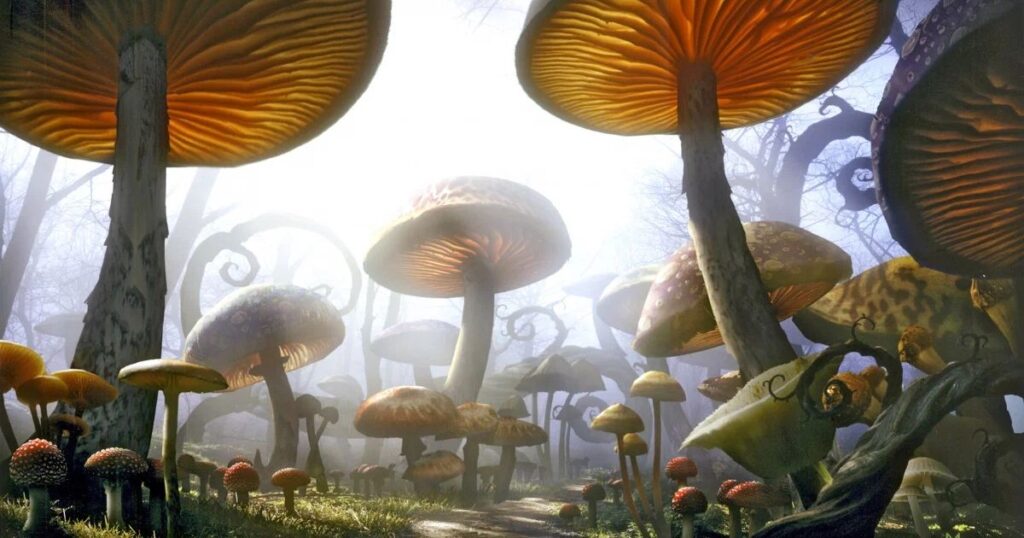Mushrooms have always captured our imagination. Their unique shapes, colors, and textures make them a favorite subject for many artists. In the world of mushroom drawing, artists find endless inspiration.
From the mysterious fungi found in forests to the vibrant varieties in gardens, mushrooms offer a rich source of creativity. This article will explore the fascinating intersection of mushrooms and art. We will dive into drawing techniques, historical significance, and the cultural impact of these intriguing organisms.
The Allure of Mushrooms in Art
The beauty of mushrooms goes beyond their appearance. Mushroom illustrations have appeared in many cultures throughout history. They often symbolize change and transformation. Their odd shapes and forms lead artists to explore deeper meanings. The allure of mushrooms in art is not just about their looks; it’s also about what they represent.
Many artists find comfort and inspiration in their natural complexity. Artists today continue to draw inspiration from mushrooms. In the art world, they are seen in paintings, sculptures, and illustrations.
Artists use mushrooms to express their ideas about nature, life, and even fantasy. The fascination with mushrooms in art remains strong, encouraging a new generation of mushroom artists to explore their creativity.
Historical Significance

Mushrooms have played a vital role in various cultures. They often feature in folklore and mythology. For instance, in ancient cultures, symbolic mushrooms represented the connection between the earth and the spirit world. Their presence in myths helped people understand the mysteries of nature. This rich history makes mushrooms a significant subject in art.
Many famous artworks feature mushrooms, reflecting the values of the time. Artists like Matisse and Van Gogh have included mushrooms in their works. These pieces often reveal how humans view the natural world. As artists interpret mushrooms, they also connect with traditions and beliefs. This blend of history and creativity creates a powerful bond between art and the natural world.
The Modern Appeal
In today’s art scene, mushrooms are experiencing a renaissance. Artists are using them to comment on modern issues like environmental change and sustainability. They draw from nature, reminding us of the delicate balance we share with the planet. Mushroom art techniques now focus on both representation and environmental consciousness. This modern appeal keeps the subject fresh and relevant.
Social media has also played a significant role in this resurgence. Artists share their mushroom paintings and fungi artworks online, reaching a wide audience. This exposure helps foster a community of mushroom enthusiasts. It encourages more people to engage with drawing mushrooms and learn about their beauty.
The Art of Drawing Mushrooms: Techniques and Tips
Drawing mushrooms requires both observation and skill. Artists must study the structure of mushrooms closely. This study involves sketching and understanding their forms. It is essential to capture the essence of each species accurately. Various drawing techniques for mushrooms help artists achieve realism in their work. Artists can use mushroom sketch tips to improve their drawings.
Starting with simple shapes can help. Artists can begin by breaking down the mushroom into basic forms. Once they understand the structure, they can add details like texture and shading. Practicing with fungi sketches can refine their skills. This process allows for a more profound connection with the subject. Ultimately, each drawing becomes a unique representation of the artist’s interpretation of mushrooms.
Essential Tools for Drawing: Places JEPQ= Mushroom

Artists need the right tools to create stunning mushroom drawings. Essential tools include pencils, pens, and different types of paper. Each tool offers a unique effect, allowing artists to experiment with various mushroom drawing styles. For instance, watercolor paints can bring vibrancy to the artwork, while graphite pencils can capture delicate details.
In addition to tools, artists should consider using fungi sketchbooks. These books help keep sketches organized and accessible. They can also serve as reference materials for future projects. With the right tools and resources, artists can unlock their potential for creating amazing mushroom artistry.
Mastering Fungal Forms: A Step-by-Step Guide
Observation and sketching are crucial steps in mastering mushroom drawing. To create accurate sketches, artists should start by studying the mushroom’s form. They can use real mushrooms or photographs as references. Understanding proportions and shapes is key. This observation helps artists capture the essence of fungi accurately.
Adding texture and details is the next step. Each mushroom species has a unique surface that adds character. For example, some have smooth caps, while others are fuzzy. Artists can replicate these textures using various techniques, such as cross-hatching or stippling. The goal is to make the drawings come alive with intricate details.
Shading and depth add realism to mushroom sketches. Artists must understand light sources and how they affect shadows. Techniques like blending or using darker shades can create depth. This skill is crucial in making mushroom drawings appear three-dimensional.
Color and medium are essential in mushroom art as well. Artists can experiment with various mediums, such as watercolors, acrylics, or digital tools. Each medium provides a unique effect. The choice of color can evoke different emotions and atmospheres. Artists can mix colors to achieve the natural hues found in mushrooms.
Creative Approaches to Mushroom Art
Mushroom art can take many creative forms. Abstract art is one approach that allows artists to explore shapes and colors without strict realism. By focusing on the form and using vibrant colors, artists can create striking compositions. This method encourages a more personal interpretation of mushrooms.
Fantasy and surrealism offer another exciting avenue for exploration. Artists can depict mushrooms in imaginative worlds, merging them with dream-like elements. This approach invites viewers to see mushrooms through a different lens, sparking curiosity and wonder. Well-known mushroom illustrators and mushroom painters often blend these styles, leading to unique artworks.
Mixed media is also a popular method for expressing mushroom themes. Artists combine various materials, such as paint, fabric, or digital elements. This technique can create depth and complexity in mushroom art. Fungi artistic expressions are often more impactful when multiple mediums come together.
The Cultural Impact of Mushroom Art

Mushrooms carry deep symbolism in various cultures. They can represent transformation, fertility, and even death. This symbolism makes them significant in the world of art. Artists often draw from these meanings to enrich their work. By incorporating mushroom mythology, they create a dialogue between the past and present.
Environmental and ecological themes are increasingly relevant today. Artists use mushrooms to raise awareness about nature and conservation. Their work encourages viewers to appreciate the beauty of fungi while considering their impact on the environment. This connection highlights the importance of fungi in art and fosters a sense of responsibility among audiences.
Also read this: Executive Coaching Program – Leadership Transformation by Pedro Vaz Paulo
Conclusion
The journey of drawing mushrooms is filled with creativity and meaning. Mushrooms offer endless inspiration for artists. From their historical significance to their modern appeal, these unique organisms have a place in the art world.
As artists continue to explore mushroom artistry, they invite others to appreciate the beauty and complexity of fungi. This celebration of mushrooms encourages a deeper connection to nature and fosters creativity in everyone who engages with this vibrant art form. Embrace your artistic journey and let the world of mushrooms inspire you to create your own fungi artworks.












